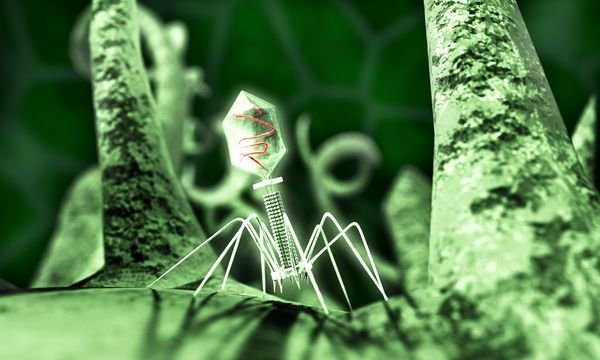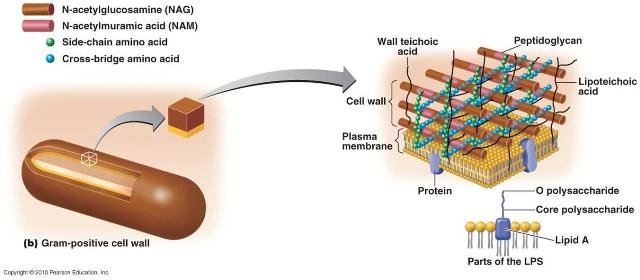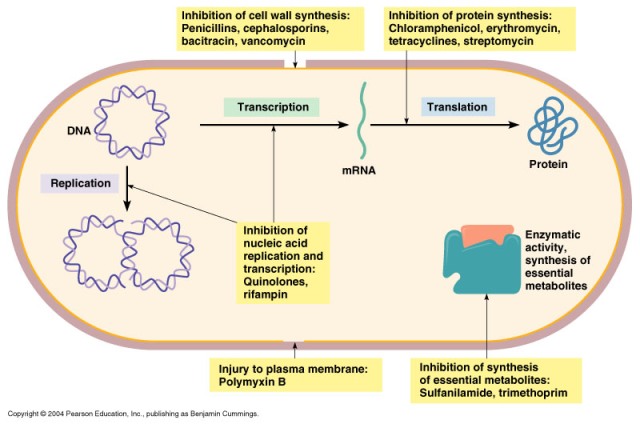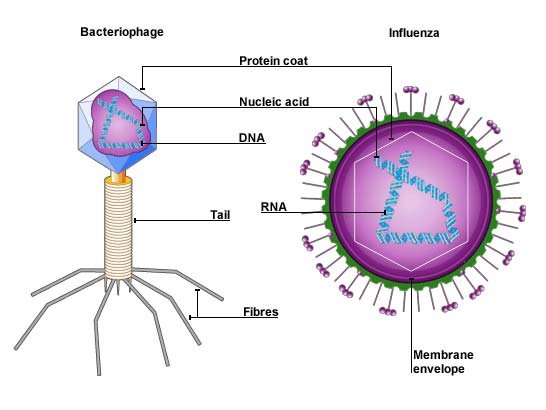Why Antibiotics Do not Work on Viruses?
Welcome to you all.

Viruses are one of the mysterious things nature has come up with. Despite the tremendous advance in science and medicine viruses are still ahead of them in terms of their variety of disease causing capability , adaptibility in the adverse conditions and their ability to defy the drugs.
From simplest of the disease like common cold to the deadliest like of the HIV-AIDs, viruses cause hundreds health problems in the human being. But do you know the fact that Antibiotics we use for almost all of the bacterial, fungal and protozoal diseases do not work in the viral ones?
..Have you ever wondered why viruses are so immune to the antibiotics? What is the mechanism they have that prevents the antibiotics to work against them? That is the topic we will discuss today!
First of all, lets know a little about how antibiotics work.

Antibotics are the antimicrobial drugs that work against variety of Bacteria, fungi and other microbes. Different type of antibiotics have different mechanism of action, but the essence of all of these is to hamper the biological metabolic activity of the Organism. By blocking or inhibiting the metabolic processes antibiotics eventually kill them.
so,the one thing that the antibiotics require to work against bacteria is any metabolic proces the bacteria undergoes. Different kinds of antibiotics target different Metaboic processes and by hampering the metabolism they kill them.
Lets take an example of a common drug that is used in every day practice, lets have a look at the mechanism of action of Penicillins.

Fig- structure of bacterial cell wall
This is molecular picture of an bacteria showing components of its cell wall. Cell wall is the outer covering of bacteria, it is formed by the network of proteins and carbohydrates. the main step in cell wall synthesis is cross linking of NAG and NAM along with the other components(see the picture above). This requires an enzyme known as transpeptidae.
Penicillins act by inhibiting the cell wall synthesis of bacteria. They bind to a protein in the cell wall and enter into bacterial cell, there they bind to an enzyme called Transpeptidase and inhibit the cross linking and make the cell wall weak. Cell tries to grow and eventually burst out and die in the face of weak fragile cell wall.
That was just one example, there are thousands of antibiotics which target different metabolic processes-

Fig-Mechanism of action of Antibiotics[source]
- Cell wall synthesis inhibitors- Penicillin, cephalosporin, vancomycin.bacitracin
cell wall becomes weak and fragile that can not withstand the adverse environment and organism dies. - DNA sunthesis inhibitors -Fluoroquinolones and rifampicin
DNA is like the CPU of the computer, it regulates all the metablic activities , these drugs by blocking DNA synthesis cause cell death - Protein synthesis inhibitors - Aminoglycosides, chloramphenicol and tetracyclines
When essential proteins can not be synthesized it is obvious that cell can not maintain its integrity and will die - Inhibitors of Metabolite production- Sulphonamides
they block synthesis of metablites, for example sulphonamides inhibit folic acid synthesis which is required for the Nucleic acid synthesis
Upto now you know what are the antibiotics and how they work on bacterial cells, and more importantly you know what is the requirement for a cell to be acted upon by an antibiotic .i.e. a metabolic process...
Now comes main question..Why they have no effect on the viruses?

Fig- Structure of virus[source]
The viruses are not same as bacteria, they are made up of central core of genetic material(DNA/RNA) surrounded by a protein envelope , they have no cell structure whereas bacteria are unicellular organisms with definitive well developed cellular structure.
| Bacteria | viruses |
|---|---|
| They are unicellular, consist of single cell containing nucleus, cytoplasm and cell organelles | They are acellular, they contain an nucleic acid surrounded by protein, without a cellular structure |
| Living organisms | They behave as living inside other living cells and act non living outside them, they are obligatory parasites |
| They have their own metablic processes | They use host's metablic process for their function |
Viruses have no metabloism of their own. They invade the living host cell and they use host's metabolic processes for synthesis of their structural components.

Fig- life cycle of a virus [source]
For example Bacteriophage, a virus that invades bacterial cells has no own metabloism. It enters the bacterial cell by its lytic enzymes, then it releases its DNA(nucleic acid), it destroys the hostDNA forms nucleic acid and other proteins required for synthesis of new viral particle. Thats how they reproduce. They are dead thing outside this bacterial cell.
Viruses have no metabolic process of their own, they solely depend upon the host cellular mechanism for their function. so there is no process in viruses where antibiotics could act and block it.
and another thing is that they do not require any nutrient to survive.In other living organisms nutrient provide energy and the precursors for synthesis of cellular structure and function, if there is no nutrient living organisms will die, but it not the case with viruses. if they are outside the host they remain in inactive form and when inside an organism they they use the hosts products to make their own so there is no need of any food for the viruses.
Conclusion
Being a living organism Bacteria has various of metabolic activities for its structural integrity and proper functioning. Antibiotics target these metabolic processes and block them without which bacteria can not survive. But the case is different with viruses, they have no such metabolism where antibiotics could act and thus are not affected by the antibiotics.
Credits-
1.http://learn.genetics.utah.edu/content/microbiome/antibiotics/
2.http://www.bbc.co.uk/bitesize/higher/biology/cell_biology/viruses/revision/1/
3.http://slideplayer.com/slide/7043078/
4.https://bio.libretexts.org/TextMaps/Map%3A_Microbiology
- Upvote
- Resteem &
- Give a follow at @himal for more of these posts

Thank you @himal for your nice post. Viruses are tiny dreadful creatures. May be we should use Anti-viral drugs instead of antibiotics to work againts the virus 😊😊. Am i right..??
Yes thats the right thing to do...but in many diseases sign and symptoms of bacterial and viral infection are similar which makes it difficult to choose the drug..
Congratulations! This post has been upvoted from the communal account, @minnowsupport, by doc.himal from the Minnow Support Project. It's a witness project run by aggroed, ausbitbank, teamsteem, theprophet0, and someguy123. The goal is to help Steemit grow by supporting Minnows and creating a social network. Please find us in the Peace, Abundance, and Liberty Network (PALnet) Discord Channel. It's a completely public and open space to all members of the Steemit community who voluntarily choose to be there.
If you like what we're doing please upvote this comment so we can continue to build the community account that's supporting all members.